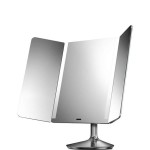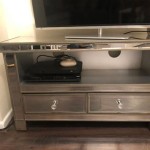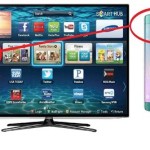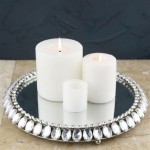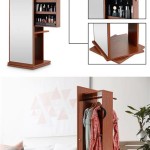How to Repair Mirror Silvering
Damaged mirror silvering, whether from age, moisture, or accidental scratches, can detract from a mirror's aesthetic appeal and functionality. While significant damage often necessitates professional resilvering or mirror replacement, minor silvering imperfections can be addressed with DIY methods. This article outlines techniques for repairing minor silvering damage on mirrors.
Assessing the Damage
Before attempting any repair, carefully examine the extent and type of damage. Pinpoint the affected areas and determine whether the damage is superficial or deep. Superficial scratches affecting only the top protective layer may be addressed with readily available repair kits. Deeper damage penetrating the silvering layer itself requires more specialized techniques.
Gathering Necessary Materials
Depending on the chosen repair method, various materials may be required. These can include mirror repair kits, silvering paint, protective lacquer, fine-grit sandpaper, masking tape, cotton swabs, and soft cloths. Ensure all materials are specifically designed for use on mirrors to prevent further damage.
Cleaning the Damaged Area
Thoroughly clean the damaged area with glass cleaner and a lint-free cloth. This removes any dust, dirt, or grease that could interfere with the repair process. Ensure the area is completely dry before proceeding to the next step.
Using a Mirror Repair Kit
Mirror repair kits are readily available and provide a convenient solution for minor scratches and silvering loss. These kits typically contain a silvering compound, applicator, and instructions. Follow the manufacturer's instructions carefully, ensuring proper application and drying time. Multiple applications may be required for optimal results.
Applying Silvering Paint
For more extensive silvering loss, silvering paint can be utilized. This specialized paint contains reflective particles that mimic the appearance of silvering. Before application, mask off the surrounding undamaged area with tape. Apply the silvering paint in thin, even coats, allowing each coat to dry completely before applying the next. Multiple coats may be necessary to achieve the desired opacity.
Protecting the Repair
Once the repair is complete and dry, applying a protective layer is crucial to prevent further damage and preserve the repair. This can be achieved using a clear protective lacquer specifically designed for mirrors. Apply the lacquer in thin, even coats, allowing sufficient drying time between each application.
Addressing Deep Scratches and Silvering Loss
Deep scratches and significant silvering loss often require professional resilvering or mirror replacement. Resilvering involves chemically stripping the remaining silvering and applying a new reflective coating. This process requires specialized equipment and expertise and is typically performed by professional glass companies. In cases of extensive damage or when resilvering isn't feasible, replacing the mirror may be the most practical solution.
Preventing Future Damage
Preventing future silvering damage involves adopting proper mirror care practices. Avoid using harsh chemicals or abrasive cleaners on mirrors. Clean mirrors regularly with a gentle glass cleaner and a soft cloth. Protect mirrors from excessive moisture, especially in bathrooms and kitchens, by ensuring adequate ventilation. Handle mirrors carefully during cleaning and transportation to prevent scratches and impacts.
Alternative Repair Methods
For very small areas of silvering loss, some alternative methods can be considered. These include using reflective tape cut to the precise size and shape of the damaged area, or applying a small amount of chrome nail polish. While these methods may not provide a perfect match, they can offer a temporary solution for minor imperfections.
Safety Precautions
When undertaking any mirror repair, prioritize safety. Wear appropriate protective gear, including gloves and eye protection, especially when handling chemicals or paints. Ensure adequate ventilation in the work area. Dispose of used materials responsibly in accordance with local regulations.

How To Repair Mirror Desilvering Easy Ways Fix Scratches Ehcar Net Clean Mirrors A Frame Diy

Repair Or Replace Desilvering Bathroom Mirror Solution For Black Edges

How To Repair And Re Antique Mirrors Doityourself Com

Dresser Set Mirrors Harriete Estel Berman

How To Repair Mirror Desilvering Remarkable Solutions

Dresser Set Mirrors Harriete Estel Berman

Dresser Set Mirrors Harriete Estel Berman

Blue Magic Silver Mirror Repair Kit 1mpw5 19794 6 Grainger

How To Repair A Broken Mirror Frame Diy Inspired

How To Fix A Ed Mirror The Diy Repair Guide


